WHAT TO DO?
Samogitian Carillon
The first small 23-bell Samogitian carillon in the territory of present-day Samogitia was cast in the famous European and world-famous Dutch bell-casting plant „ROYAL EIJSBOUTS“ for the final 600m of Samogitian baptism. to commemorate the jubilee year (2013-2017). 1417m. for the only time in the world history of the Catholic Church, it was not the pope but the diocese of Constanta, the diocese of MEDININKAI, founded. The place chosen for her by the Duke of the Grand Duchy of Lithuania Vytautas is in Varniai. 1864 Samogitian bishop M. Valančius and the Curia are deported from Varniai to Kaunas (an essential factor in the city’s depletion). In the territory of the historical Samogitian diocese, 1926. After the establishment of the Lithuanian ecclesiastical province, the largest of the three dioceses remains the Telšiai diocese. The bishop’s throne is established in St. In the Cathedral of Antanas Paduvietis, and the new diocese, starting with the prominent Bishop of Telšiai J.Staugaitis, continues the traditions of the historical Samogitian diocese (1417-1926).
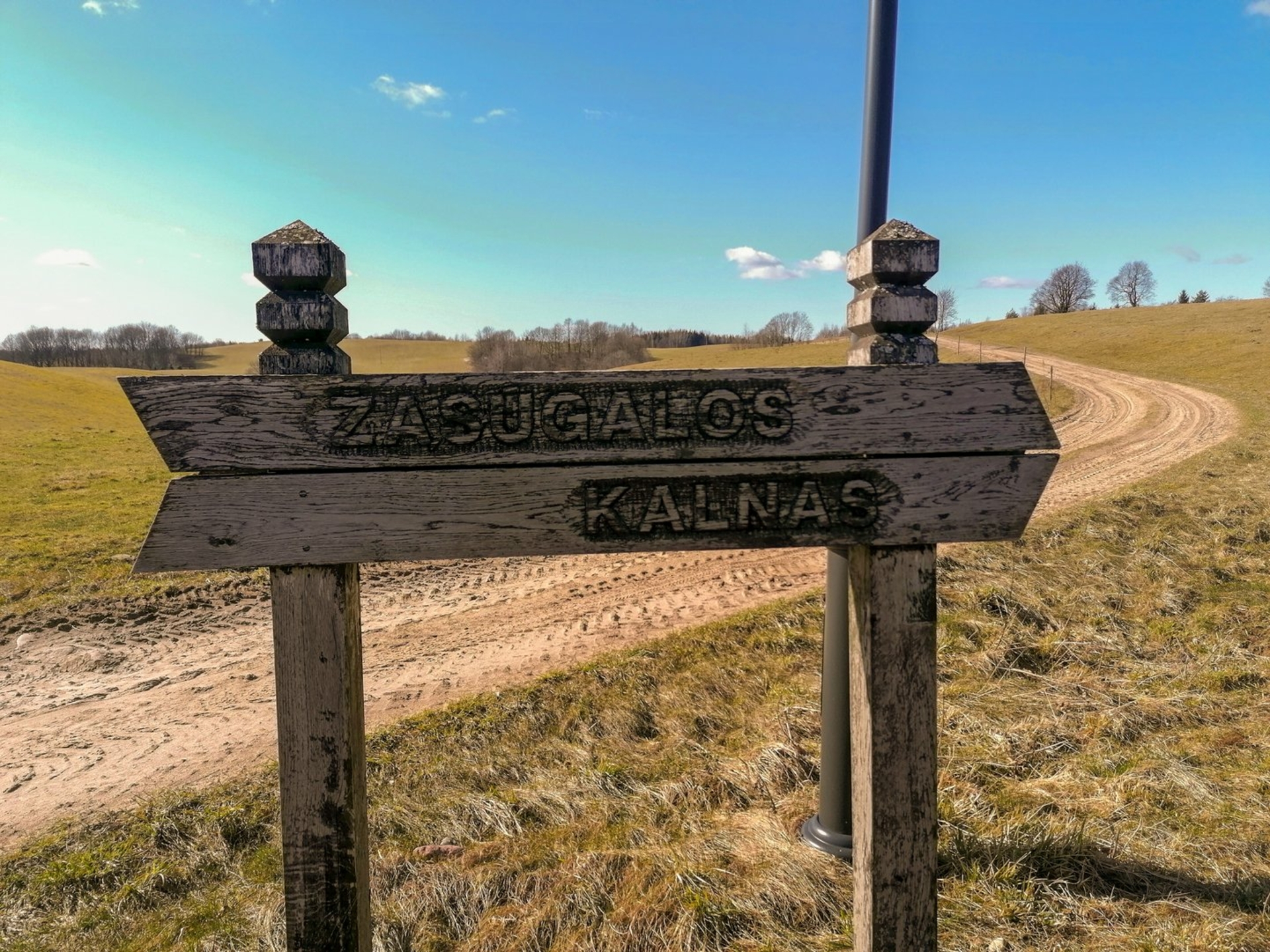
The mound of Žąsūgala (Baltininkai)
Until the baptism of Samogitians, this hill was called Baltininkai Hill. In ancient times, the territory of the mound belonged to the Curonian land, had a defensive purpose and was used as a guard hill. The hill is 210.3 m above sea level. Here you can see very beautiful views of Samogitia, see the mounds of Seba, Girgždūtė, Medvėgalis, Moteraitis, Sprūdė, Šatrija mounds. At the bottom from the south and the east, Ziggale is surrounded by Virvytė. According to the filing, flying geese loved to rest on this mountain.
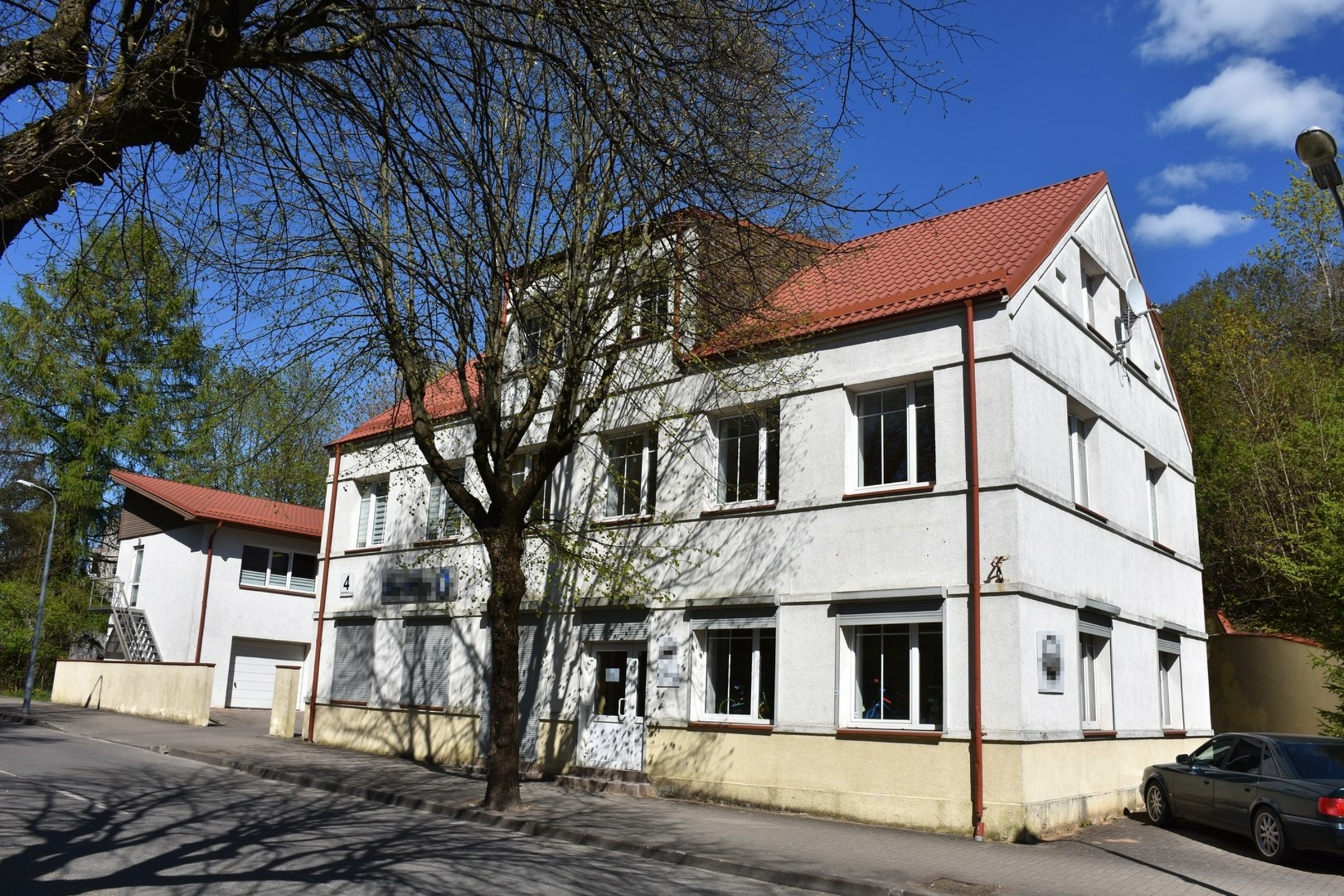
Jewish Teachers Seminary
1923 The Jewish Teachers‘ Seminary „Javne“ moved from Kaunas to Telšiai in 2006 – the only school of this type in Lithuania that trained teachers for Jewish schools.

Exposition of Samogitian Museum „Alka“ in Samogitian Village
The Samogitian Village Museum opened its doors to visitors in 1982. The museum, which covers an area of 8.5 hectares on the shores of Lake Masty, currently houses 16 authentic 19th-century buildings. end of the 20th century pr. buildings, which are divided into three homesteads and the public sector.
The exposition of the museum is located in the following sections of homesteads: in the homestead of a rich farmer there are eight buildings: a dwelling house, a barn, a barn, a barn, a barn, a pig farmer, a jar and a sauna. In the homestead of the average peasant there is a residential house, a barn, a clown and a barn with a barn. There are two buildings in the homestead of a small peasant: a hut and a barn with a barn. The public sector consists of a windmill, a blacksmith and a cemetery.
The expositions installed in all the buildings show the lifestyle, environment and everyday life of the peasants of that time. The exposition of the Samogitian village is supplemented by Lithuanian gene pool animals – Samogitian horses. The Samogitian Village Museum hosts educational classes, celebrations, and evening theater evenings.
The exposition is open from spring to autumn.
The facility is adapted for people with reduced mobility.
Exposure opening hours:







I-VII 10.00 -18.00. **
** On the last Sunday of each month, admission is free for all museum visitors.
Booking of excursions with a guide, educational classes by phone 8 601 92417.
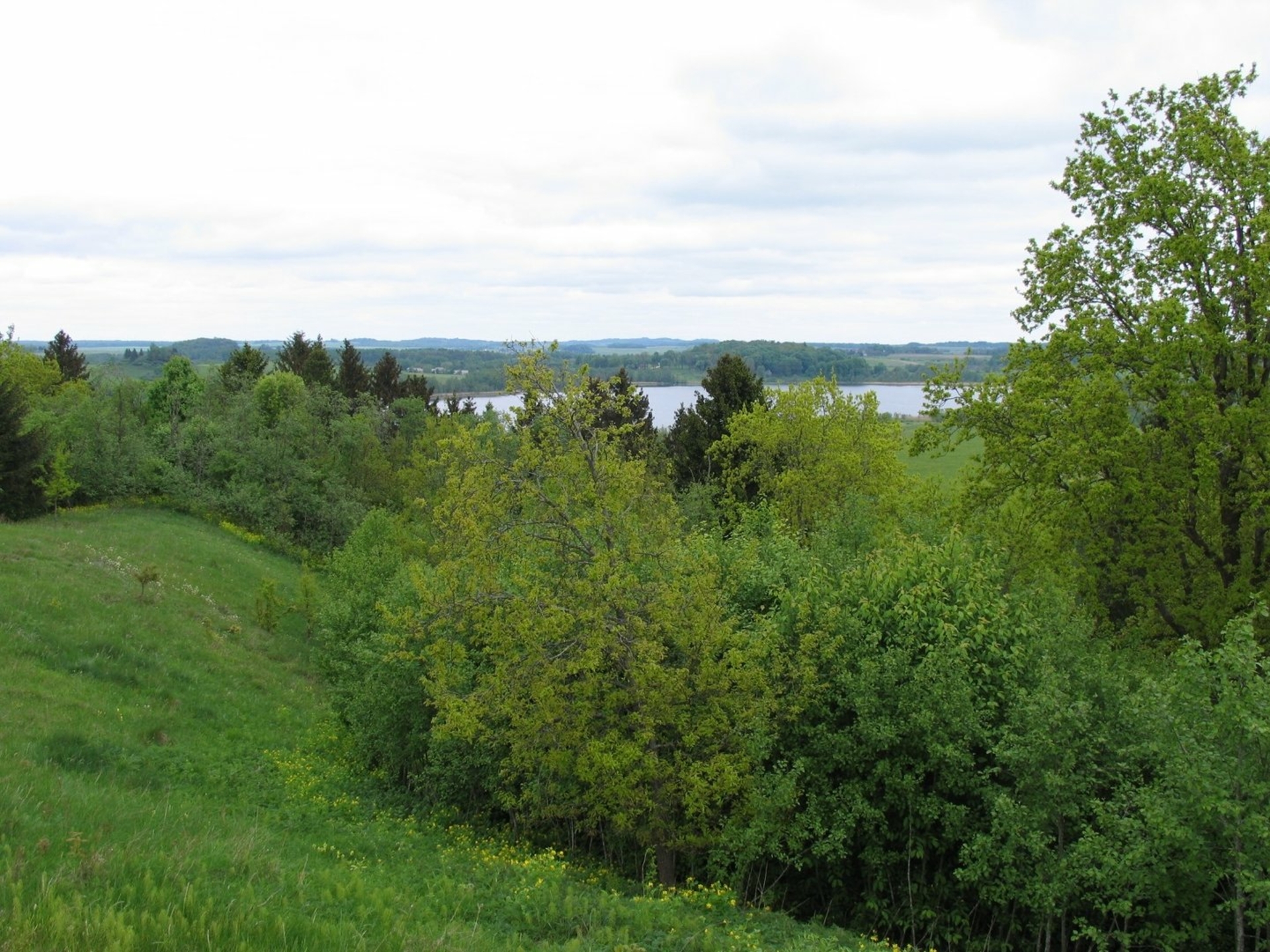
The mound of a woman
1.05 km southeast of Pavandene St. St. Anne’s Church, 0.75 km south of Lake Glūdas and 0.3 km east of the Janapole-Bubiai road. The mountain rises 218.2 m above sea level. At its top are 4 elevations, standing a wooden cross.
A mound in the territory of the Samogitian Separation Hill, reminiscent of a lying woman, about 1.05 km from the village of Pavandenė. Rising 218.2 m above sea level. At the top of the hill – a cross, next to it – Gludas (Bludo) lake, Janapolė – Bubiai road.
At the top of the hill are four climbs. The southern part of the hill is three meters higher than the northern one. From a distance, it seems to be a woman’s head. Other elevations form the body image of a woman stretched out for rest.
According to legends, in ancient times, women gathered on the hill to accompany their men to war, and in the basements deep underground, the defenders of the land hid women and children from enemies. The woman’s mound, as well as the adjacent Sprūdė mound, Gludas lake, Sklepkalnis belong to the Baltic defense and cult center, and the defense-political system of Medininkai land.
A woman, according to prof. A. Butrimas, should also have belonged to the defense-signaling system of the Samogitian land, which operated in the following order: Defenders of the region, located in the castles of Panemunė, learned about the enemy who had attacked the country and created bonfires at night. The crew members of the nearby mounds, who noticed them, also passed on this message – so the information about the imminent danger quickly reached all the most important Samogitian castles.
J. Andriusevičius Museum in Gaulėnai –
It is an ethnographic museum founded in Gaulėnai Primary School. It exhibits archaeological material from the earliest times (Neolithic) and later historical material of the Šatrija, Gaulėnai, Maudžiorai and Luokė neighborhoods. The historical exposition dates back to the year of the Lithuanian Revival and the declaration of independence in 1990. and these days. The museum has exhibits illustrating serfdom in Samogitia. The museum has an abundance of ethnographic collections of household items and tools from old craftsmen.
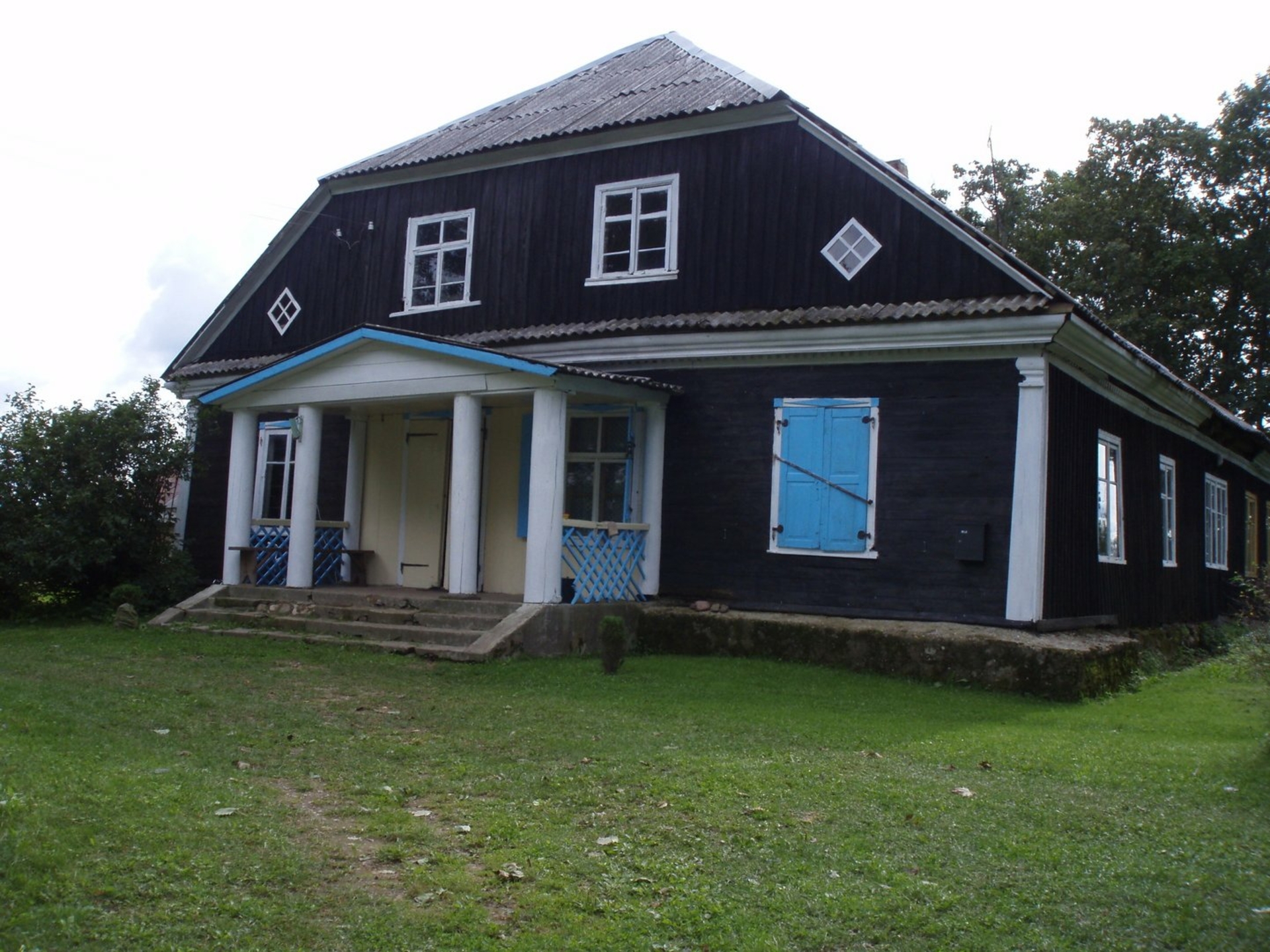
Brėvikiai manor homestead
Brėvikiai Manor is reached 3 km east from Alsėdžiai town. From ancient times the manor belonged to the old tribe of Samogitian noblemen Narutavičius. This tribe received the coat of arms in 1413. During the acts of Horodle. On that occasion their old name Norutis was changed to Narutowicz.
To this day a wooden dwelling house (palace), a barn, basement remains, part of the old manor alley have survived. Preparation of Stanislovas Narutavičius Museum was started.
The manor can be visited by prior arrangement by telephone.
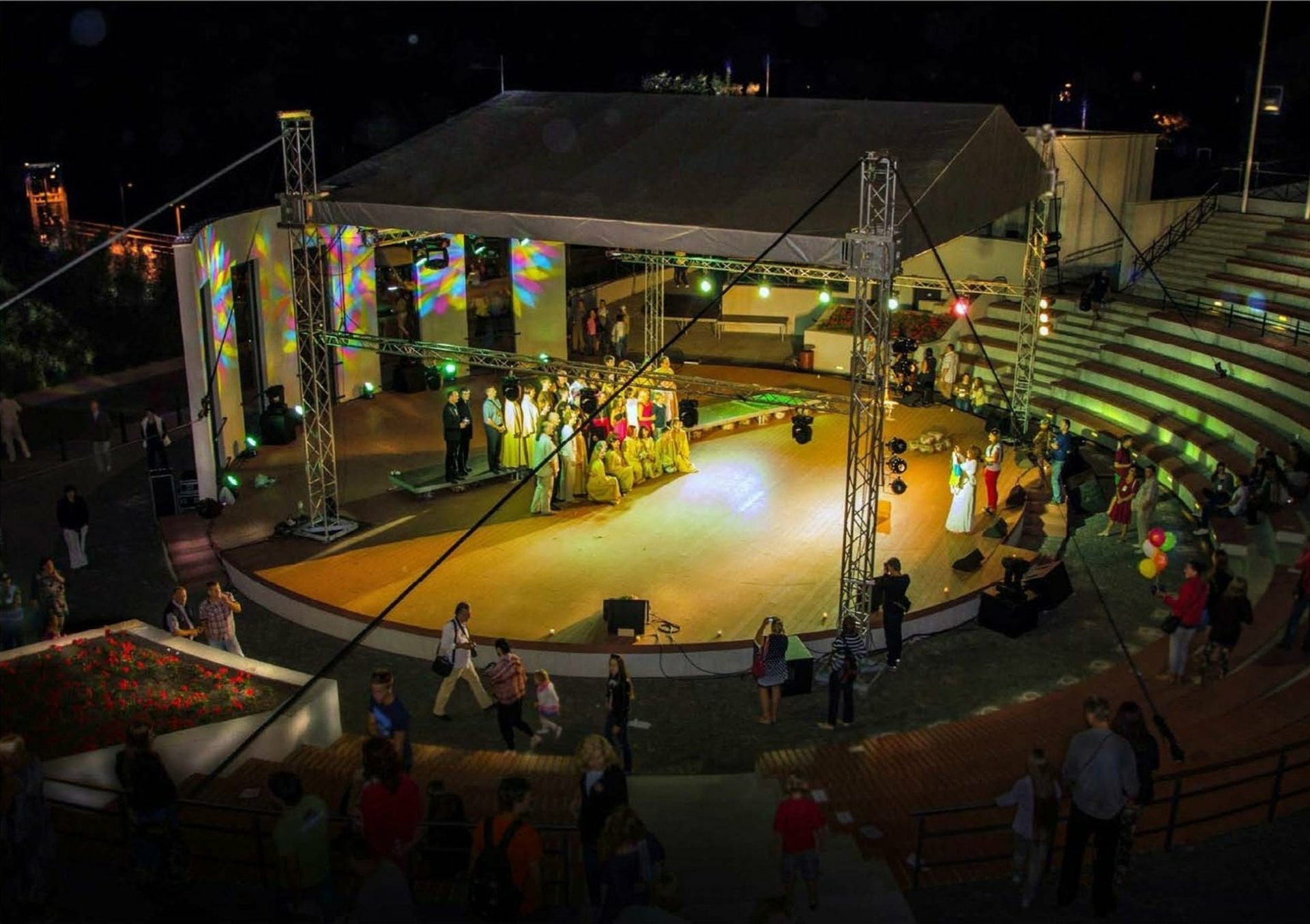
The Amphitheater
The amphitheater, which is also adapted for the disabled, has become a major attraction and a great gathering place in Telšiai. Its stage and audio equipment allows you to enjoy various events, concerts and movies. Nearby is an amphitheater lift that takes you to the shores of Lake Massis.

Biržuvėnai mound
Biržuvėnai mound is located on the right bank of Virvyčia. Used in the IX – XII c.
The north-western part of the site was washed by ropes changing the furrow. It is believed that this mound served as a pier. There are also traditional claims that this mound was a fortification-type fortification, in which the locals hid their belongings and property in case of danger and defended themselves from enemies.
In the highest eastern edge of the site and in the embankment there is a pit marking the site of the brick Gorski Chapel, which was destroyed during the First World War. It is believed that during the Protestant Reformation, a Protestant (Evangelical Reformed, Calvinist) church stood on a mound on the site of the Gorskiai Chapel. Calvinists were popularly called bambizai, so the mound got the name Bambizkalnis. Biržuvėnai mound is also called Koplyčkalnis.
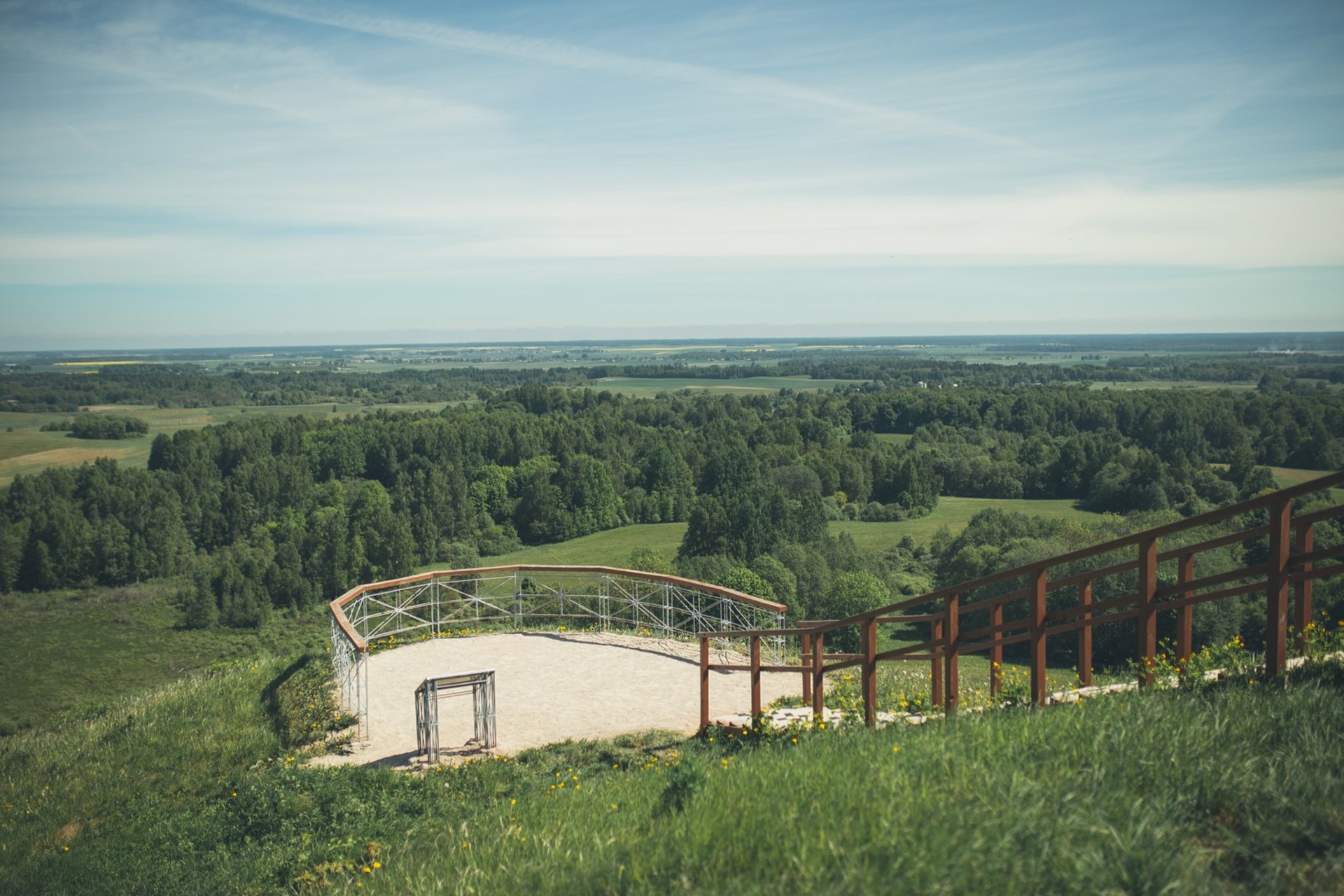
Pasatria Mound (Satatia)
The most famous, most visited hill in Telšiai district. The mound is located 1.5 km southwest of the Luokė – Šaukėnai road. It rises above sea level in 228 m. The western and eastern slopes of the mound are very steep, more than 25 m high. The site at the top is oval in shape, 60×60 m in size. Bright embankments on the south side of the slope.
1835 excavations took place in the mound. According to archeological finds, it dates back to the 1st millennium. after Kr. the second half – II thous. the beginning. According to researchers, a wooden castle stood on the hill in ancient times, and people lived on the slopes.
Researchers claim that in ancient times there was one of the most important pagan temples of this region on Mount Šatrija, the significance of which disappeared after the baptism of Samogitia. There have been many legends and myths about this mound for a long time. From Šatrija there are views of the hilly Samogitia of unique beauty. On a sunny day, you can even see Medvėgalis Hill, which is 35 km away. The Woman’s, Sprūdė, Girgždūtė and several other mounds are much brighter.
Code Medal – Created in 2006 bronze medal deciphering the words „Medals“ Museum’s 31 „Alka“ is read with a special key. Embossed plastic makes sense in architecture a unique, not only Lithuanian-scale, cultural project that has been going on in Telšiai for more than twenty years, and its excellent collection of medals is kept in the Samogitian Museum Alka.
House of Bishop Motiejus Valančius – A house with 1850-1864 Motiejus Valančius, a bishop, historian, writer, prominent figure of the Church and society, lived in. The building of the bishop’s manor in this place was built after 1680. after the great Varniai fire, the site of the old manor was designated for the construction of a brick cathedral. The current building was built in the 19th century. In the 1930s. After becoming the Samogitian bishop, M. Valančius moved the bishops‘ residence from Alsėdžiai to Varnius. In addition to social and educational activities as the city governor, the bishop also takes care of the city’s development – on his initiative, the streets are managed, a doctor, a pharmacy, a post office, a bookstore are established, and the bishops‘ residence is repaired. 1851–1855 Simonas Daukantas, invited by the bishop to Varnius, also lived in this house. Inside the building there was a large enough hall for official receptions, a buffet, the office of Bishop M. Valančius, and on the other side were the representative rooms of the bishop. The bishop’s residence included a building for servants, a barn, a stable, and a chariot. 1864 After the Russian tsarist government removed the Curia from the Samogitian diocese of Varniai and Bishop M. Valančiai to Kaunas, the building was used for various purposes. The house had a porch that was demolished in the postwar years. 2018 the house has been renovated.
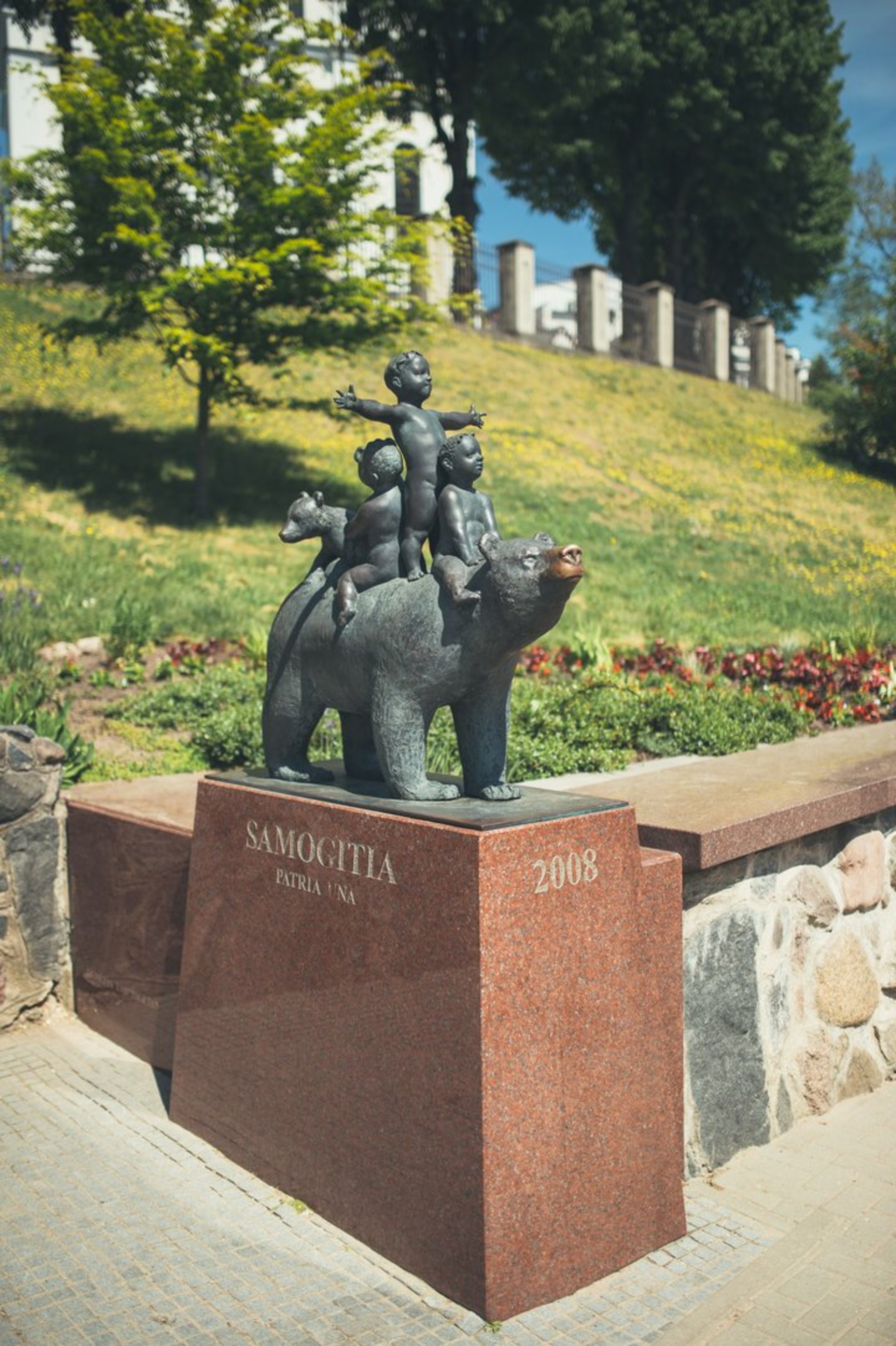
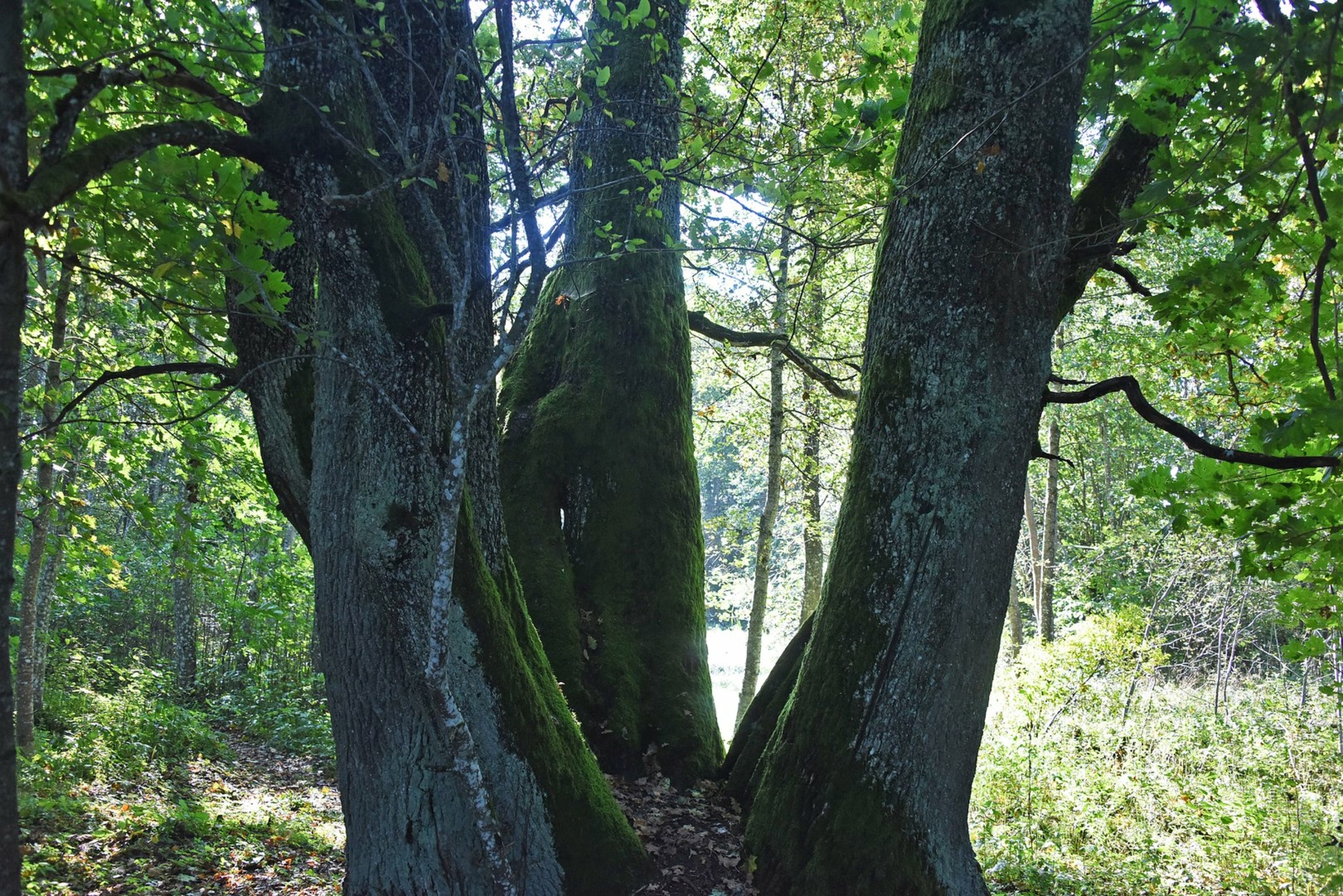

Samogitian Museum „Alka“ _ closed for RECONSTRUCTION

Blessed Church of the Assumption of the Virgin Mary

Džiuginėnai mound is located on a separate hill, on the left bank of the Durbinas stream, 4 km west of Telšiai. It is now convenient to climb the stairs to the top of the mound, and from the observation deck to admire the views of nature. On the south side, the mound is surrounded by a 1.5 m high embankment. Next to the mound is the XI-XIII c. dated Siraičiai repository.
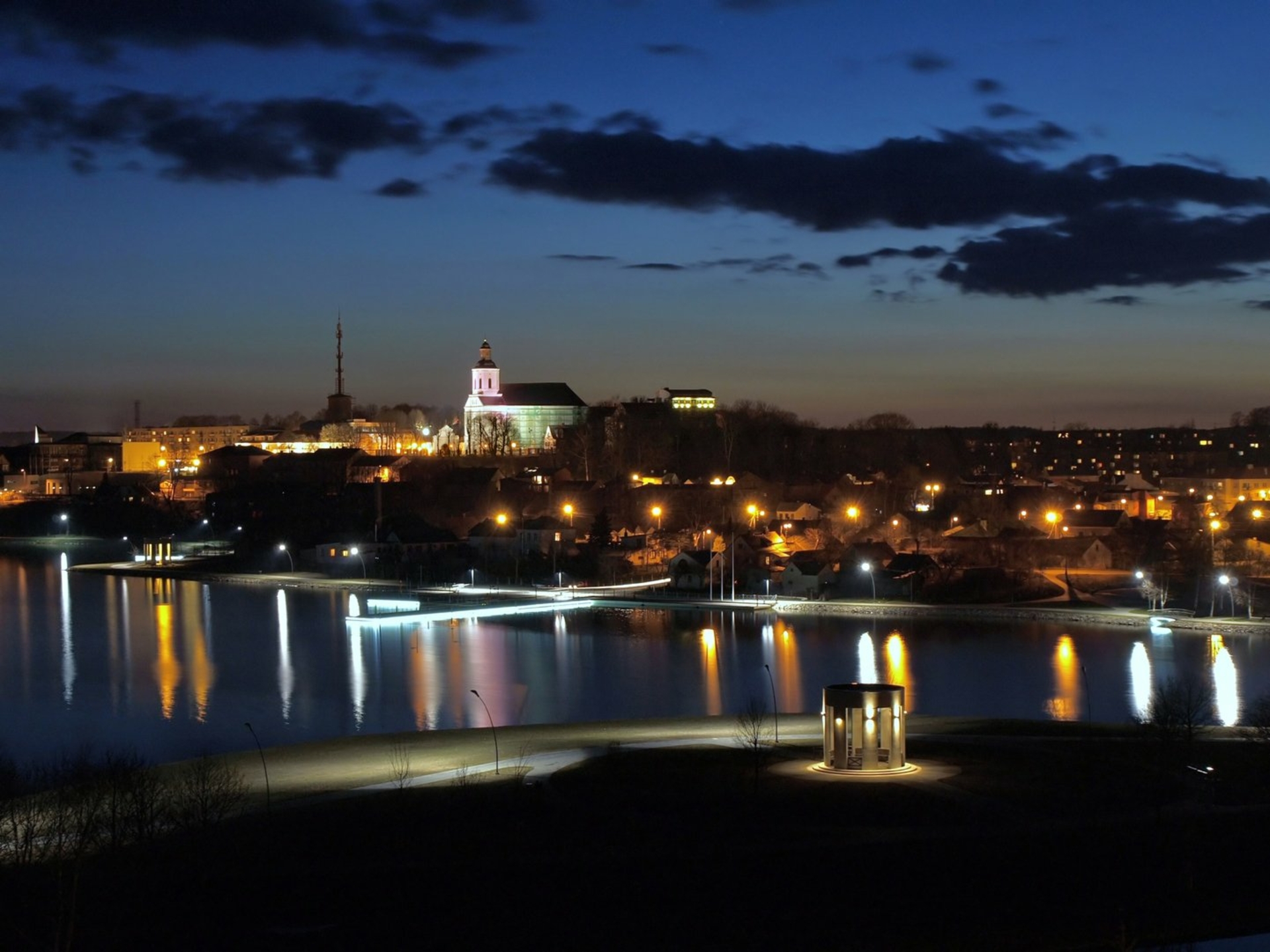
The shores of Lake Mass
The shore of Lake Massis is an important part of the recreational areas of the city of Telšiai for the recreation and recreation of residents, and for organizing various large-scale events for the public. Extension of existing and equipped new pedestrian and cycling paths in the territory of Lake Massis (network of pedestrian paths), lighting system conforming to modern technical and safety requirements, renovation of existing and new green spaces, repair of broken and new benches for recreation and sport small architectural elements: children’s playgrounds, marina, equipped beach, where not only the city residents but also guests with families, events are organized to attract more and more visitors to the Sculpture Park on the shore of Lake Masis and the views of the lake. Telšiai Mastis lake shore is an attractive recreation and recreation area that meets the needs of the society and is suitable for quality family recreation and organization of events in Telšiai city.
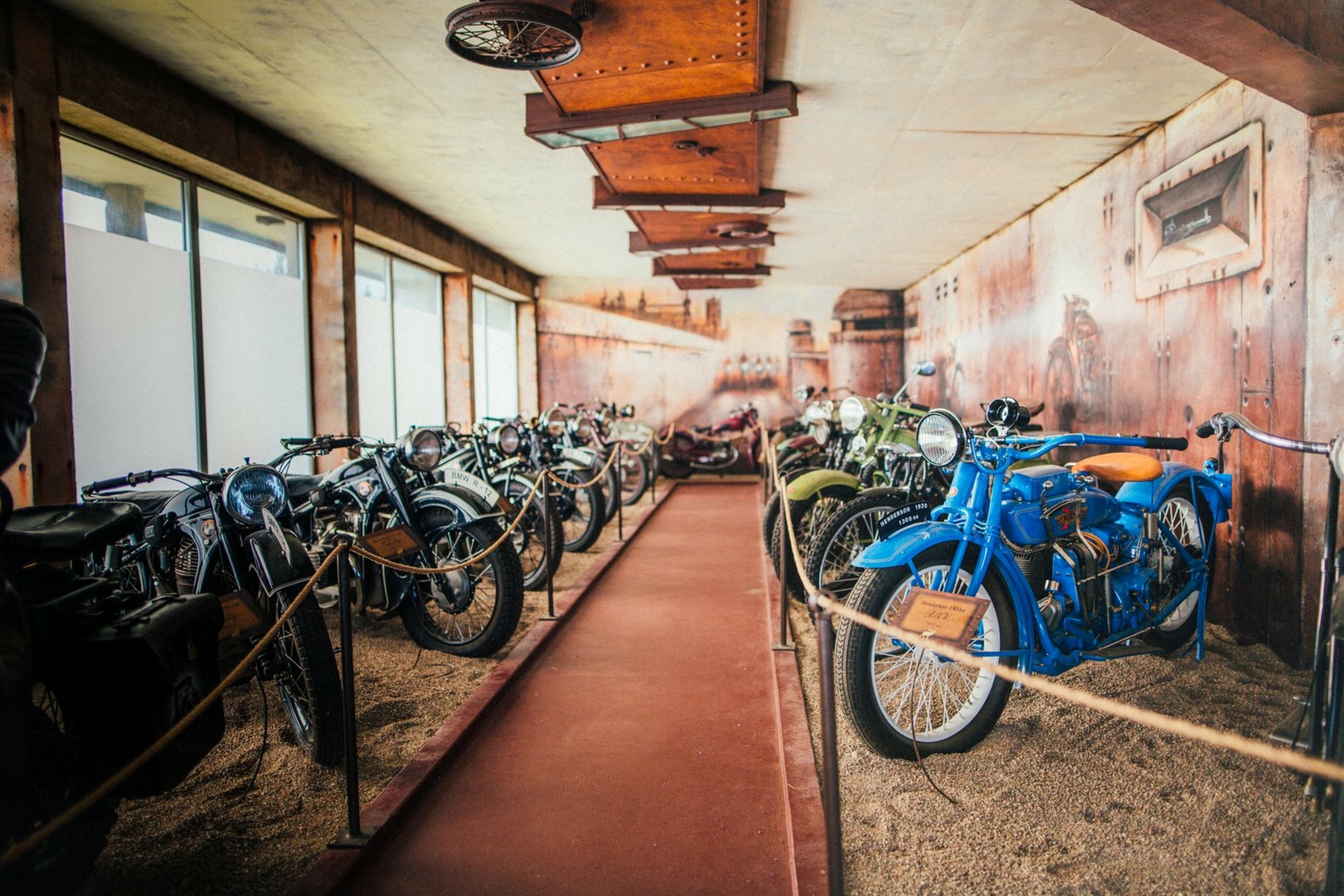
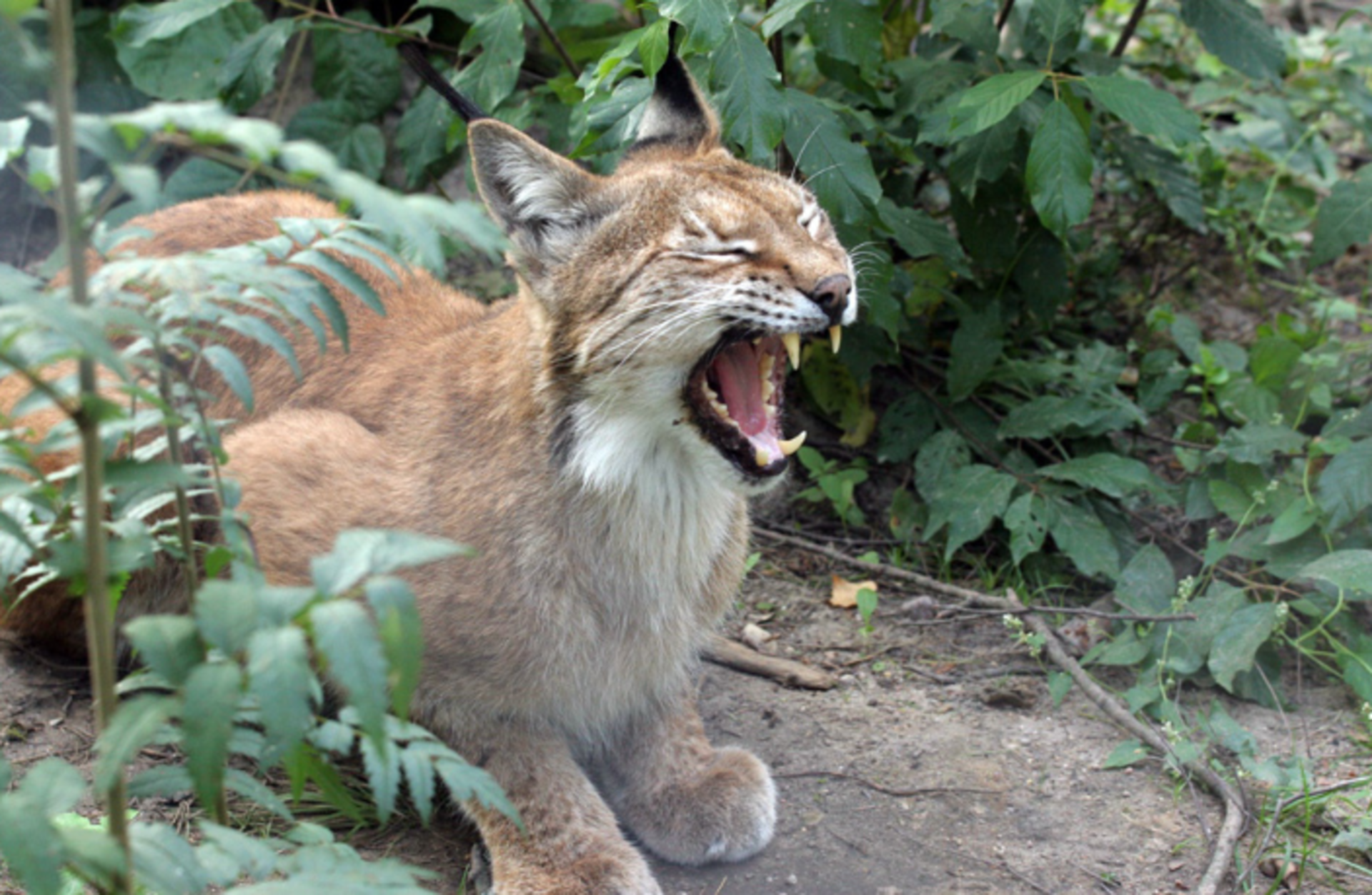
Beasts
Žvėrinčius was founded in 1996. In Ubiškės forest district in order to acquaint the public with the life of wild animals. There is a 14.7 ha forest fence for boars, fallow deer and mouflon and a 2.4 ha forest plot for wolves. Timber, lynx, mouflons, fallow deer and teddy bear Tim live in Žvėrinčiai. For the convenience of visitors, two observation decks and a gazebo, a sight, a playground for children, an oak with nests and a stand with descriptions of the most common animals and birds in Lithuania were built.
